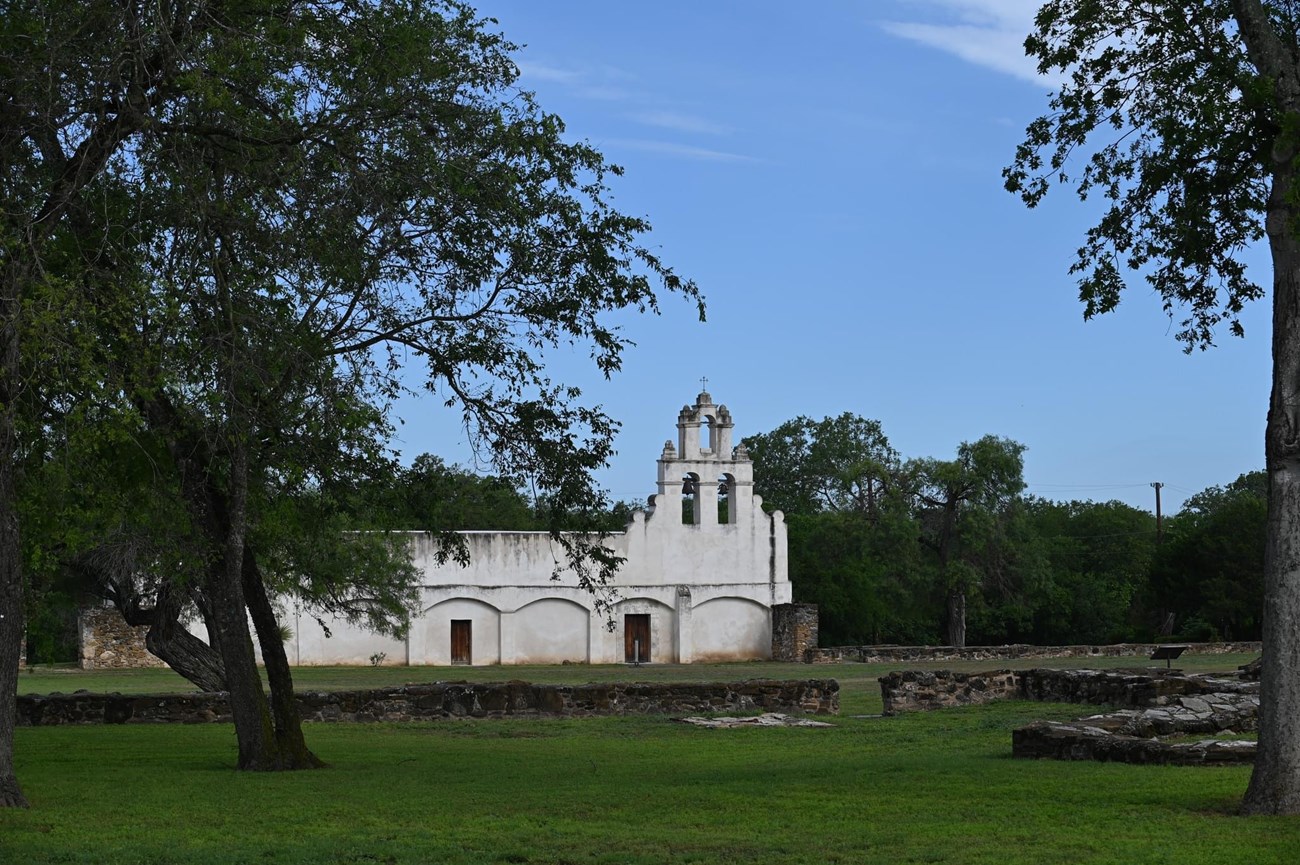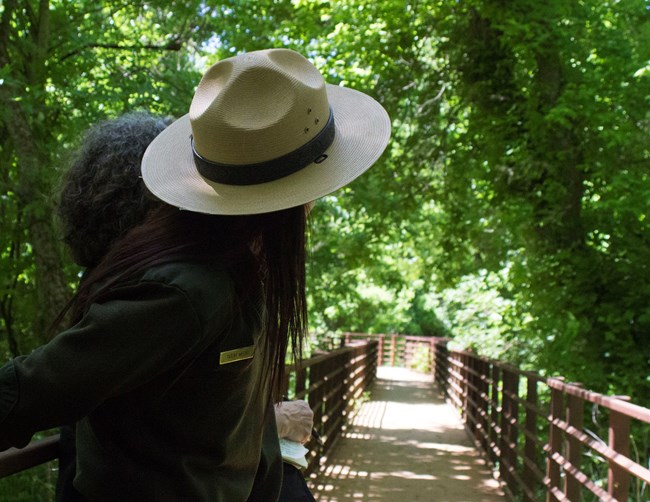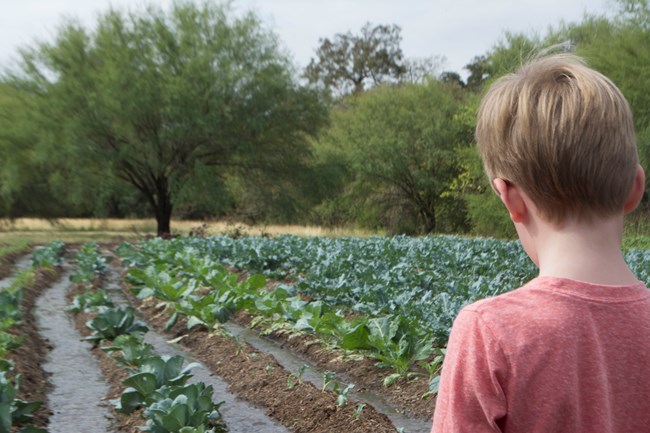
NPS Photo/Matthew Mangum Mission San JuanOriginally founded in 1716 in eastern Texas, Mission San Juan was transferred in 1731 to its present location. In 1756, the stone church, a friary, and a granary were completed. A larger church was begun, but was abandoned when half complete, the result of population decline. Mission San Juan was a self-sustaining community. Within the compound, Indigenous artisans produced iron tools, cloth, and prepared hides. Orchards and gardens outside the walls provided melons, peaches, and pumpkins. Beyond the mission complex Indigenous mission farmers cultivated maize (corn), peppers, beans, squash, sweet potatoes, and sugar cane in irrigated fields. Over 20 miles southeast of Mission San Juan was Rancho de Pataguilla, which, in 1762, reported 3,500 sheep and nearly as many cattle. These products helped support not only mission communities, but also the local settlements and presidial garrisons in the area. By the mid 1700s, Mission San Juan, with its rich farm and pasture lands, was a regional supplier of agricultural produce along the historic trading route, El Camino de Real de los Tejas. 
NPS Photo Yanaguana TrailThe Yanaguana Trail spans a beautiful stretch of the original San Antonio River. The path paved and ADA accessible. Looking down on the San Antonio River, visitors can often view turtles, owls, snakes, and other wildlife here. The Yanaguana Trail feels like an oasis in the city, transporting the visitor to a place with only natural sounds. 
NPS Photo The Farm at Mission San JuanIn partnership with the San Antonio Food Bank, San Antonio Missions NHP includes a living demonstration farm at Mission San Juan Capistrano. This demonstration farm is fed by a historic acequia, and shows visitors what the labores surrounding Mission San Juan Capistrano would have looked like. To visit the farm at Mission San Juan, cross the mission compound and take the trail to the southwest of the mission.The Development of a CommunityThe history of Mission San Juan began in the woods of East Texas. In 1716, Mission San José de los Nazonis was established to serve the Nazonis Indians. However, the mission was not successful, and whatever was transportable was moved here. On March 5, 1731, the mission was reestablished on the east bank of the San Antonio River and renamed San Juan Capistrano.Despite the new location, the mission still had to contend with adversity. Epidemics of smallpox, measles, and other European disease swept through the mission, causing much suffering and death among the native inhabitants. Early on, bands of raiding Apaches and later Comanches terrorized the community. At times, when food was bountiful and danger was low outside the protective walls, some of the mission Indians left, returning to their hunting and gathering way of life. Political problems also arose. As governing power fgures in the area changed, so did support for the mission. Still, the mission persevered and grew. By 1762 there were 203 Indians residing at Mission San Juan. The mission included a granary, textile shops, and Indian houses made of adobe with thatched roofs. One government inspector wrote in 1767, “. . . overseers or administrators are not needed. . . . The Indians themselves take care of work in the cloth factory, carpenter shop, forge . . . and attend to all of the work that is to be done in the town. They are industrious and diligent and are skilled in all kinds of labor.” One task that the community could not accomplish, however, was the construction of a new and larger church, which began in 1772. This efort may have been a part of a plan to completely renovate the east side of the mission compound. The intended design of the building probably included a vaulted ceiling over the nave and a dome over the sacristy. A lack of Indian labor prohibited the completion of the project, and construction halted in 1786. 
NPS Image. |
Last updated: May 5, 2025
